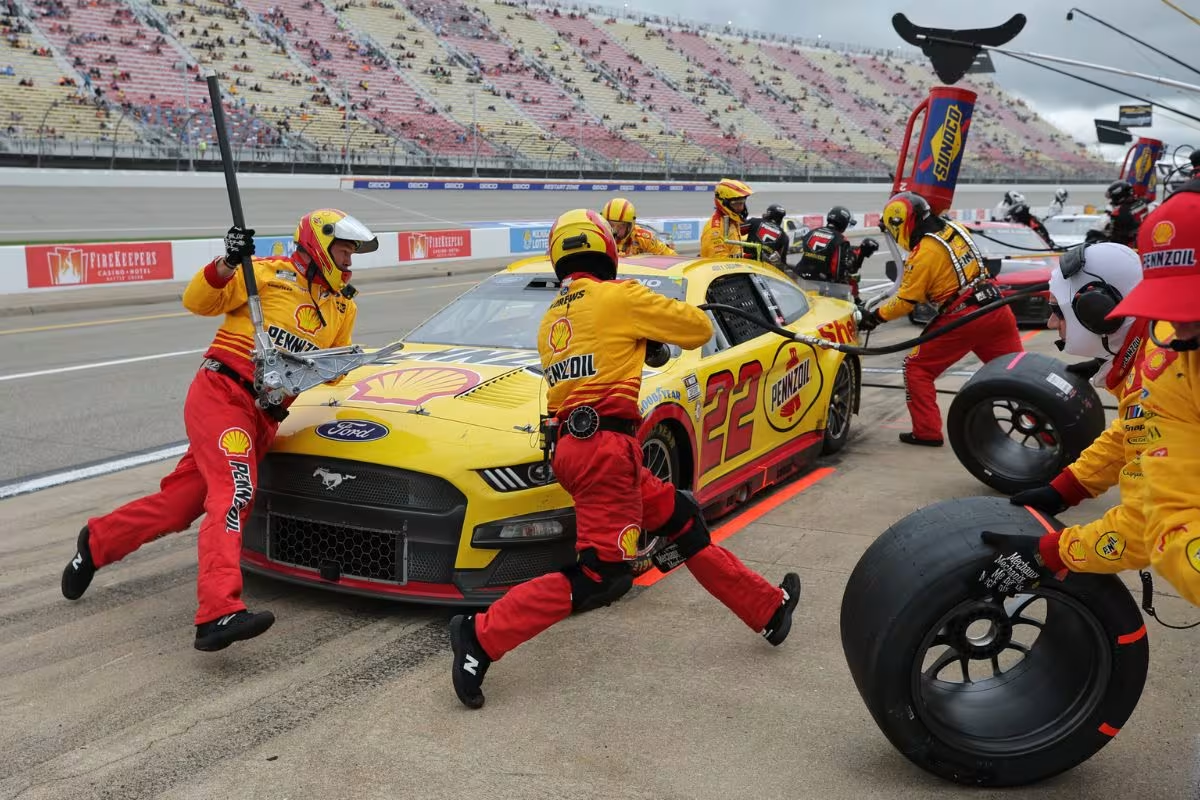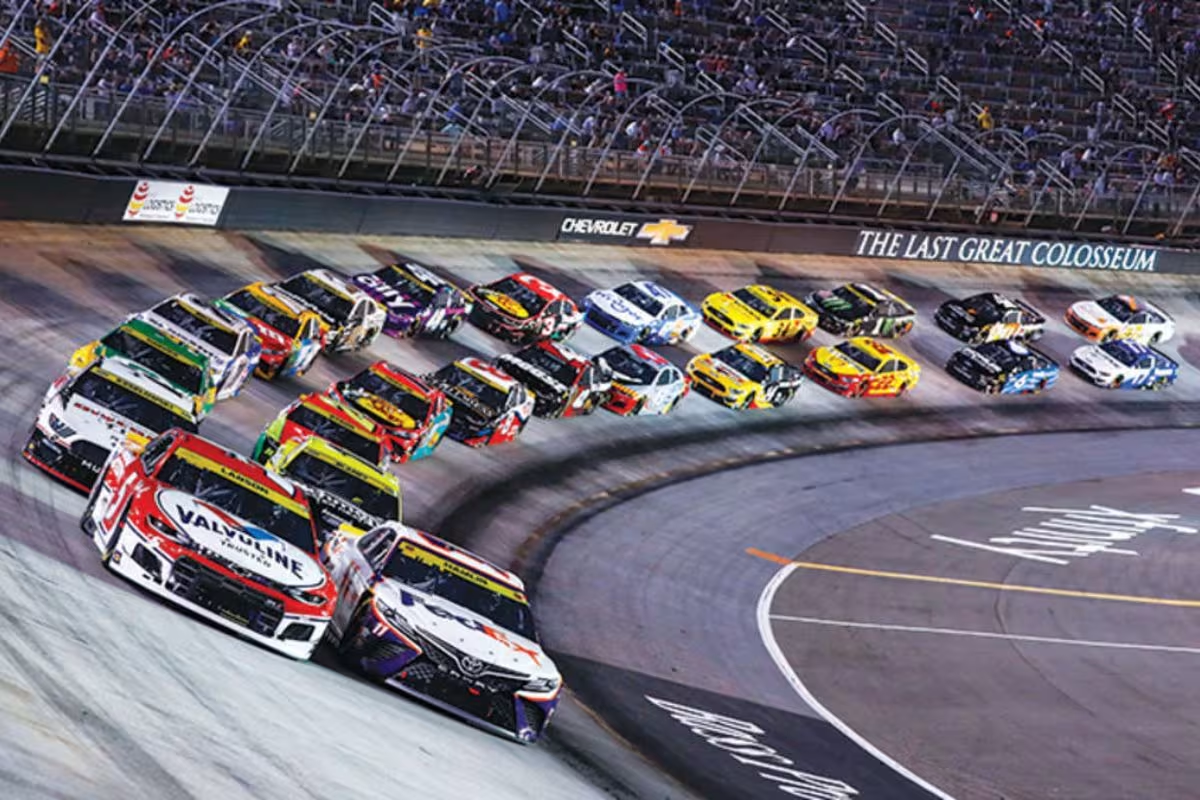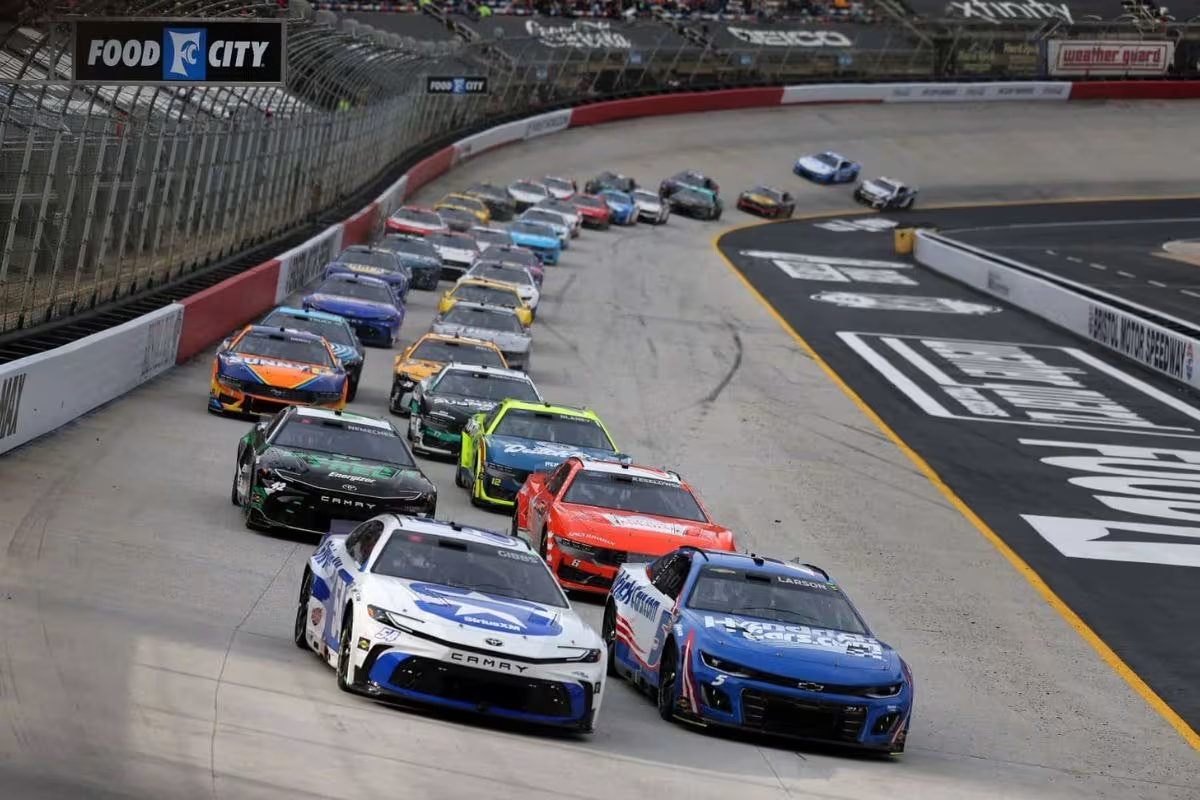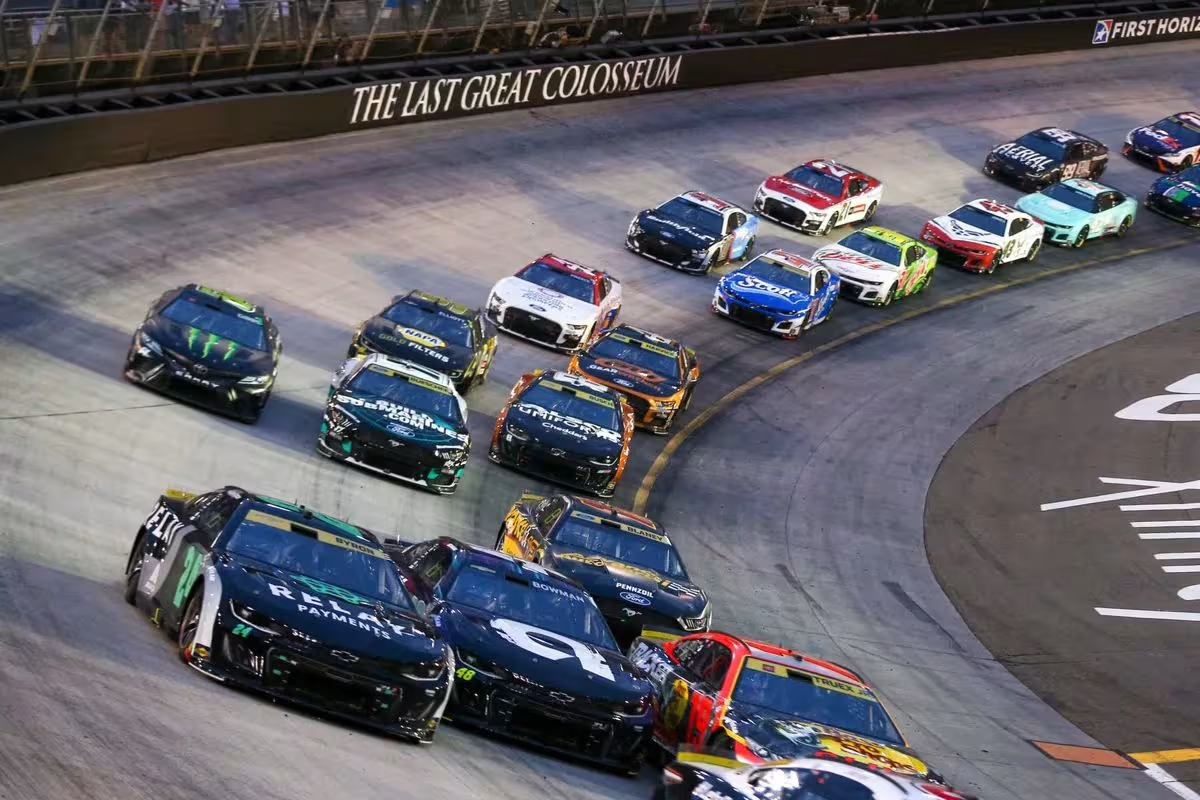How Pit Crew Helmets Are Customized: At Joe Gibbs Racing, the customization of pit crew helmets transcends mere aesthetics, intertwining cutting-edge technology with team identity. Each helmet is crafted from advanced materials like carbon fiber, ensuring unparalleled protection without compromising comfort. Custom paint jobs not only highlight sponsor logos but also embody the team’s spirit, while specialized visors optimize visibility in the heat of competition. The integration of communication systems improves coordination during critical pit stops, a demonstration of the meticulous planning behind each design. As we investigate this intricate process, one can’t help but wonder what further innovations lie ahead in the world of racing safety.
Key Highlights
- Helmets at Joe Gibbs Racing are customized with team branding and sponsor logos for identity and visibility during races.
- Advanced composite materials like carbon fiber and Kevlar are used to enhance safety and protection for pit crew members.
- Lightweight designs and ventilation systems are incorporated to ensure comfort and manage heat during intense pit stop operations.
- Specialized visors, including tinted and LED-integrated options, are tailored for optimal visibility in various lighting conditions on the track.
- Communication systems are integrated into helmets for real-time coordination among crew members, enhancing efficiency during high-pressure pit stops.
Evolution of Racing Helmets
The evolution of racing helmets reflects the broader advancements in safety technology within motorsports, showcasing an ongoing commitment to protecting all individuals involved in the high-stakes environment of racing. Initially, racing helmets served primarily to shield drivers from the impact of crashes, constructed from rudimentary materials that offered limited protection.
As the dangers of high-speed racing became increasingly apparent, the necessity for improved safety measures prompted notable innovations in helmet design.
Modern racing helmets are now crafted from advanced composite materials, such as carbon fiber and Kevlar, which provide superior strength while minimizing weight. This evolution has not only improved driver safety but has also extended to pit crew members, who are now mandated to wear helmets. This shift acknowledges the perils present in the pit area, where loose items and rapid movements can pose risks.
Additionally, the incorporation of visors into helmet designs has transformed visibility during high-pressure pit stops. These visors, made from shatter-resistant materials, enable pit crew members to maintain clear sightlines while safeguarding their eyes from potential debris.
Furthermore, helmets are equipped with advanced communication systems that facilitate real-time coordination among team members, improving efficiency and safety during races.
The continuous refinement of racing helmets exemplifies a steadfast focus on safety, ensuring that all personnel, whether behind the wheel or on the pit road, are afforded the highest level of protection in the demanding world of motorsports.
Customization of Pit Helmets
Customization of pit helmets has emerged as a vital aspect of modern racing, reflecting the intricate relationship between technology and performance in high-stakes environments. At Joe Gibbs Racing, the evolution of pit helmets emphasizes the importance of adapting equipment to meet the demands of each race condition. With the advent of groundbreaking design features, pit crew members are equipped with helmets that not only provide protection but also improve operational efficiency.
“We customize our NASCAR pit helmets. The tinted visor for day races can be swapped with the clear visor for night races. The clear visor has an LED light on the top which is plugged into the helmet. The light is activated with the push of a button on the top. Then the visor can be screwed down. Then the battery can be hooked up on the back, which powers the light and the POV camera on the front.”-(jgr team)
The customization process involves several key elements tailored to specific racing scenarios. For instance, the ability to swap visors is a significant advancement; tinted visors are preferred during day races to combat glare, whereas clear visors are utilized for night events. This adaptability guarantees peak visibility regardless of lighting conditions.
Furthermore, the integration of technology within the helmets enhances their functionality. The inclusion of an LED light on the clear visor, activated via a convenient button, allows crew members to work effectively in low-light situations.
Moreover, the helmets are equipped with a battery system that powers crucial features such as the LED light and a point-of-view (POV) camera, enabling real-time monitoring of pit activities. This multifaceted approach to helmet customization not only improves the crew’s performance but also reflects their critical role in executing flawless race strategies.
As pit crew members maneuver under immense pressure, these tailored helmets are indispensable tools that contribute to the team’s comprehensive success on the racetrack.
Safety and Performance in Pit Stops
In the high-stakes environment of NASCAR, where every moment counts, the interplay between safety and performance during pit stops becomes crucial. Unlike Formula 1 or IndyCar, NASCAR pit crew members initiate their work from the pit wall, rushing into the path of oncoming traffic as their car approaches. This unique dynamic requires not only remarkable speed and precision but also a robust commitment to safety.
The pit crew operates under intense pressure, where split-instant decisions can determine the race outcome. The introduction of the Next-Gen car with its single lug nut has intensified the need for efficiency; crew members must loosen the lug in under a moment. This rapid action necessitates helmets that are not only comfortable but also equipped with advanced features.
The right visor can greatly improve visibility, allowing crew members to navigate the chaotic environment of the pit lane effectively. Specialized lighting systems, integrated into the helmets, further enhance their ability to perform under low-light conditions, ensuring that they can see and react swiftly to any potential hazards.
Moreover, the design and material of the helmets are critical in providing maximum protection without compromising mobility. The combination of lightweight materials and aerodynamic shapes allows for unhindered movement, vital for executing complex tasks with speed and accuracy.
Financial Investment in Tires
While the thrill of the race captivates fans, the financial implications of tire investment often go unnoticed, yet they play a pivotal role in the general performance and strategy of a NASCAR team. At Joe Gibbs Racing, the cost of tires is substantial, with each car utilizing 11 sets per race—10 new and one slightly used. With four vehicles in the Cup Series, the team incurs an expenditure of $93,456 for tires alone at each event, highlighting the financial stakes involved in tire management.
Tires are more than just rubber; they are critical to a car’s performance, affecting speed, handling, and safety. The absence of refunds from Goodyear compounds the financial burden, as unused tires cannot be returned, forcing teams to bear the loss.
While some tires may be reused, Denny Hamlin underscores the downsides of stockpiling. As tires age, their rubber compounds deteriorate, which can severely impact performance.
“We’re not going to want older tires because they do they age. Rubber ages, and it changes compounds. It’s funny, when you get older tires, that can really mess up the car um, so it just goes to waste.”-(denny hamlin)
In this environment, the financial investment in tires is not merely an operational expense; it directly influences a team’s competitiveness on the track. Understanding this aspect of NASCAR gives fans a deeper appreciation for the complexities of race strategy and the hidden costs that underpin the excitement of motorsport.
View this post on Instagram
Strategic Tire Management
Effective tire management is integral to a team’s competitive approach in NASCAR, creating a direct link between financial investment and race performance. The ability to make timely decisions about tire usage can greatly influence a driver’s success on the track. Teams must navigate the balance between the cost of fresh tires and the potential benefits they offer during critical race moments.
Joe Gibbs Racing has learned from past experiences, such as the 2023 race at Richmond Raceway, where the use of scuff tires in a pivotal moment hindered Martin Truex Jr.’s performance. To avoid repeating such costly mistakes, the team has adopted a proactive approach to tire management, ensuring that the right tire compounds are available when needed, even at an increased expense.
Incorporating effective tire management strategies empowers teams to optimize their performance while minimizing risks. The decisions made in the pit can ultimately dictate race outcomes, making this aspect a focal point for any competitive team in NASCAR.
News in Brief: How Pit Crew Helmets Are Customized
The customization of pit crew helmets at Joe Gibbs Racing highlights a profound commitment to safety and performance. Advanced materials not only improve protective capabilities but also contribute to the general efficiency of pit stops. Custom paint jobs and integrated communication systems reflect the team’s branding while facilitating seamless coordination among crew members. This thorough approach exemplifies how attention to detail in helmet design can greatly impact team success on the racetrack, ultimately driving competitive excellence in motorsports.
ALSO READ: NASCAR Round of 12 Qualified Drivers: Last 2 Names Will Surprise You!




